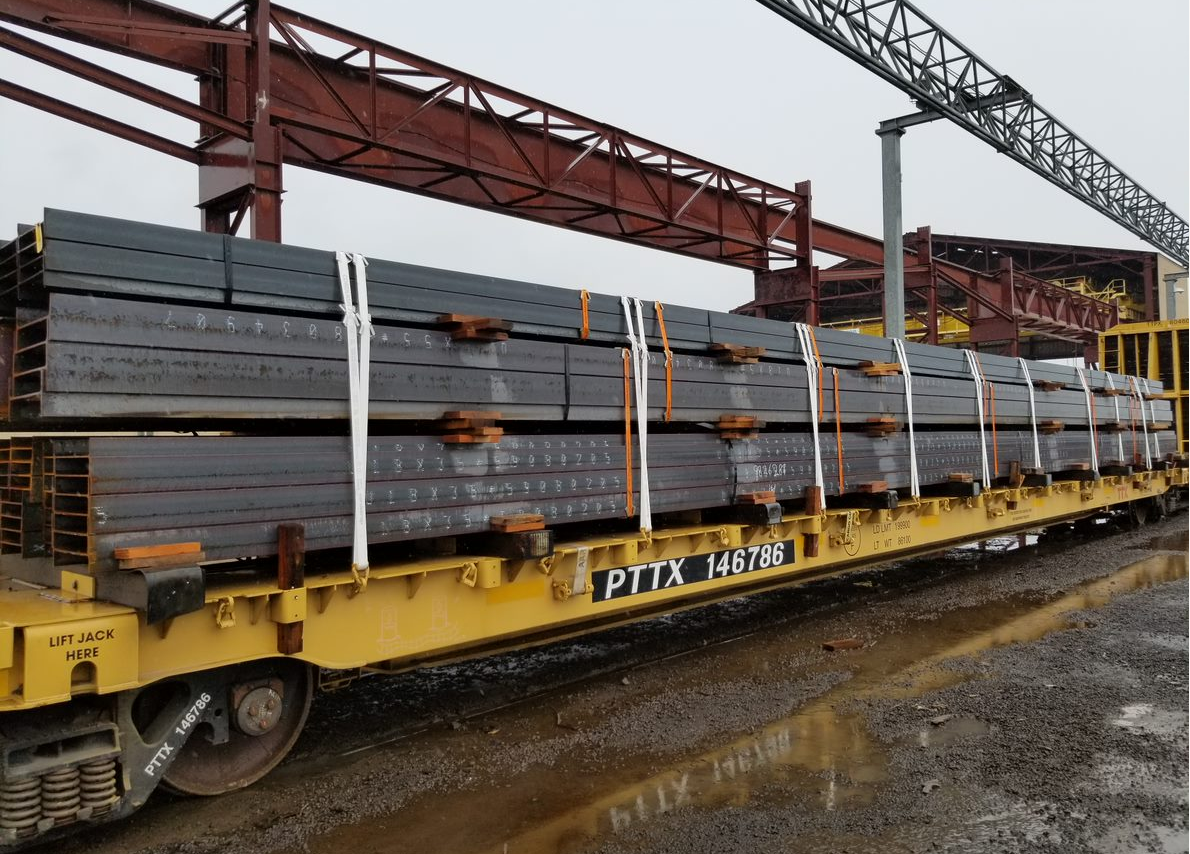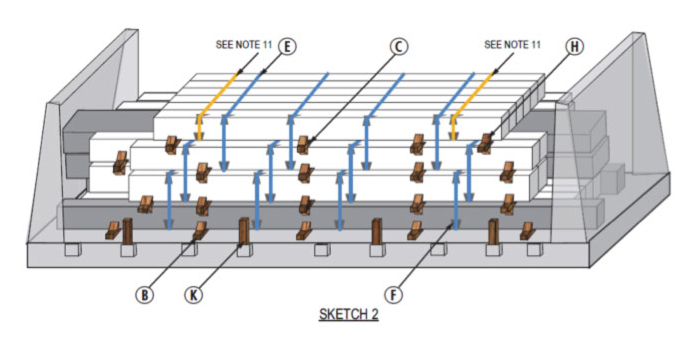Since 2014, Cordstrap has been working with US steel producers to solve issues related to the shipment of structural steel on rail cars. Structural steel loads on rail cars are considered “floating loads” and are designed to allow some lengthwise movement during transit. Floating loads are unitized as a single package. They are designed to move very little and do not pose a threat of coming off the car when loaded properly.

Over the last twenty years the steel industry has changed and is having a negative effect on carloads originating from the manufacturers. In the 1990’s steel distributors ordered their products in bulk and held large inventories of common sizes of beams. This worked well for the manufacturers because the loads tended to be more uniform and consistent in package length. In the modern ‘just in time’ world, these distributors have looked to reduce the risk of holding stock by ordering materials by project. This means more cars are being shipped with varying lengths – and new challenges for every North American steel manufacturer.
The biggest challenges include the variances of I-beam package lengths on any given car. A shipment used to contain several layers of similar lengths, stacked on top of one another and banded together in a single package. A full car twenty years ago would contain full cars of sixty-foot material, with some fifty-five foot lengths on top. During switching or humping, the load might shift and the larger material could end up at the bulkhead stopping it. The top layers would then be only a few feet from the end of the car as well.
Today, I-beam loads consist of all the materials needed to construct a single building or bridge – perhaps sixty-foot bases, fifty-foot cross members and forty-foot sub floors, all on a single rail car. These were often loaded pyramid-style with the longest beams on the bottom. As a result the top packages now could see twenty feet voids from the end of the beams to the bulkheads on the car.
The problem with this was that if the load was continually bumped in transit, the bottom beams would shift to the bulkhead quickly and stop. Once the cars were bumped again the bottom layer would now be up against the bulkhead and the top layers would still have up to twenty feet voids remaining between the ends of the package and the bulkhead of the car. The force created by all the remaining packages on the steel banding would cause it to break at the next impact. As a result, all the banding would frequently break off leaving nothing to hold the units together as initially designed.
In 2014 this problem led to a huge two-train accident. One train carrying cars loaded with beams was in a super elevated curve at low speed when some of the beams slipped off the car just as another train was passing in the opposite direction. Nobody was killed, but the accident resulted in what was rumored to be a $21 million clean up.
Immediately the NTSB and North American railroads began looking for a better way to secure these loads. Within one week of the accident, Cordstrap was on site with a major steel manufacturer, rewriting the current load plan. They tested several new methods, and by the end of the following week, Cordstrap became the first company to pass a formal AAR impact test with non-metallic banding on structural steel.

Over the next four years Cordstrap presented several new load plans to major steel companies and the AAR for consideration. Ultimately, a pivotal investment by Cordstrap in steel edge protection paved the way to a successful field trial and new approval. In June 2017, the AAR published the new Structural Steel Figure 109, utilizing non-metallic strap. Manufacturers now have a new option to secure their beams with a safer, stronger product.
Since the release of Figure 109, Cordstrap has continued to expand and improve beam-loading options. In September 2017 another formal impact test was conducted with the AAR on a new load plan that would allow beam shippers to increase the loading capacity per car. The formal impact testing was a success and field trials are currently being scheduled.
If you would like more information about how the Cordstrap Rail Team can help your company solve rail-loading issues, please contact Scott Loudon at Scott.Loudon@cordstrap.com.
For expert advice on cargo securing solutions contact us now
Contact now